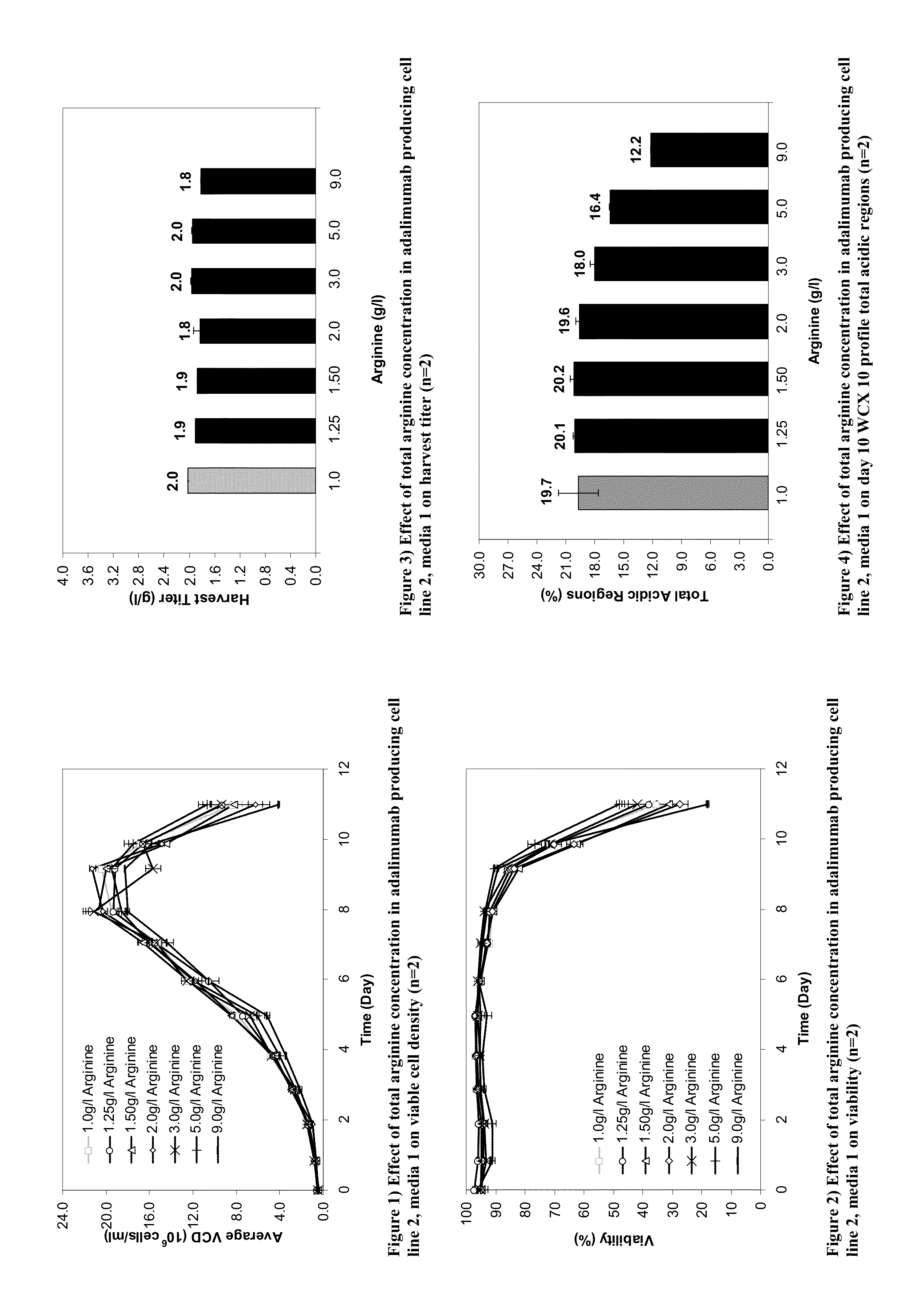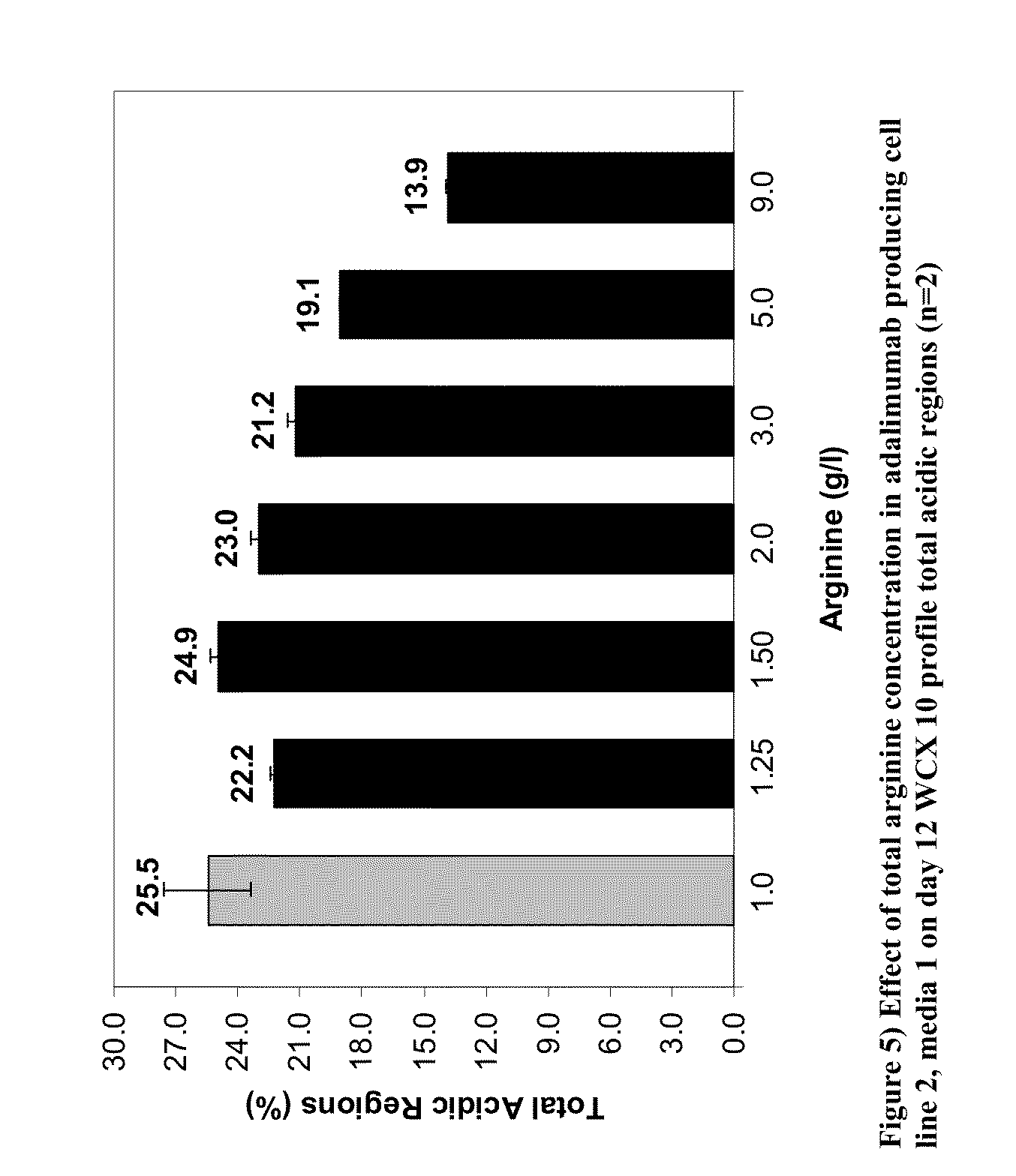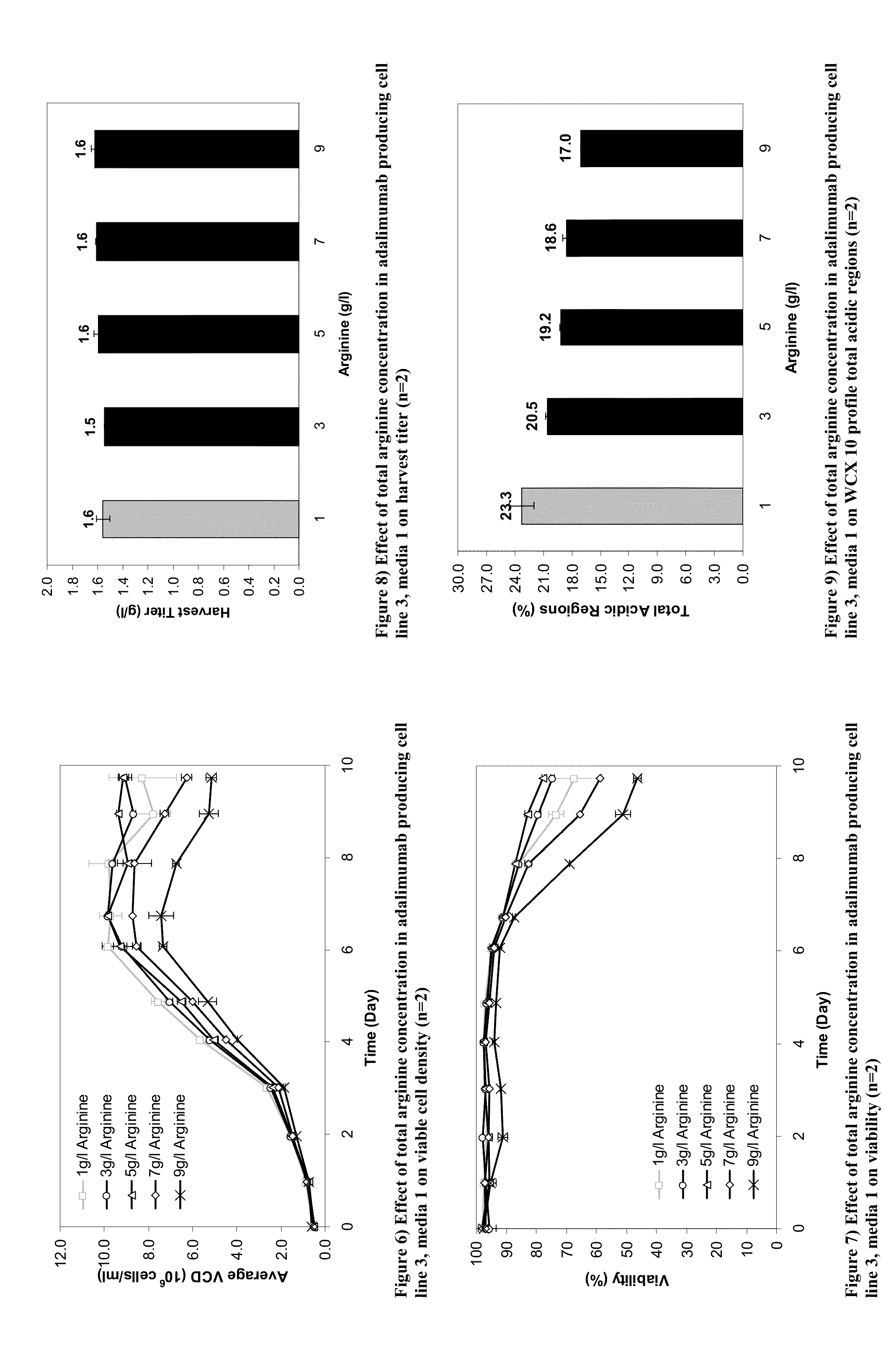Low acidic species compositions and methods for producing and using the same
a composition and acidic species technology, applied in the field of low acidic species compositions and methods for producing and using the same, can solve problems such as the reduction of acidic species, and achieve the effects of improving biological properties, improving therapeutic efficacy, and increasing cartilage tissue penetration
- Summary
- Abstract
- Description
- Claims
- Application Information
AI Technical Summary
Benefits of technology
Problems solved by technology
Method used
Image
Examples
example 1
Method for Reducing the Extent of Acidic Species in Cell Culture by the Addition of Medium Components
[0612]Production of recombinant proteins by host cells can result in product-related charge heterogeneities present in the population of proteins produced by the cells. The presence of acidic species in the population of proteins is an example of a product-related charge heterogeneity. Control of the amount of acidic species present in the population of proteins produced by the host cells can be accomplished by modifying the culture conditions of the host cells.
[0613]The experiments in this Example demonstrate that supplementation of cell culture medium with supplemental amounts of amino acids, calcium chloride and niacinamide enhances product quality by decreasing the amount of acidic species in the culture harvest. The amino acids included in the study were arginine, lysine, ornithine and histidine, which belong to the group of amino acids that are basic. The study includes example...
example 2
Method for Reducing the Extent of Acidic Species in Cell Culture by Adjusting Process Parameters
[0706]The experiments described below in the instant Example demonstrate that altering cell culture process parameters on-line can be used to modulate and / or reduce the acidic species of a protein of interest, e.g., the antibody adalimumab or mAb2. For example, an increased dissolved oxygen concentration and / or a decrease in final pH can lead to reductions in AR.
[0707]Materials and Methods
[0708]Cell Source and Adaptation Cultures
[0709]Two adalimumab producing CHO cell lines (cell line 1 and cell line 3) and a mAb2 producing cell line were employed in the studies covered in this Example. Upon thaw, adalimumab producing cell line 3 was cultured in chemically defined growth media (media 1) in a combination of vented shake flasks on a shaker platform at 140 rpm and 20 L wave bags. Cultures were propagated in a 36° C., 5% CO2 incubator to obtain the required number of cells to be able to initi...
example 3
Method for Reducing Acidic Species by the Addition of Amino Acids to Clarified Cell Culture Harvest and by Modifying the pH of the Clarified Harvest
[0737]The present Example describes processes for reducing and controlling levels of acidic species in antibody preparations. Specifically, this Example provides a method for reducing the acidic variant content in clarified harvest, as well as a method for reducing the formation rate of acidic species in clarified harvest. The method involves adding additives like various amino acids to clarified harvest or adjusting the pH of the clarified harvest using acidic substances.
[0738]As shown below, antibody acidic species in clarified harvest can be reduced by adding additives such as arginine or histidine to clarified harvest at concentrations of more than 100 mM and 50 mM, respectively. AR reduction can also be achieved by pH adjustment of the clarified harvest to pH 6 or pH 5. In addition, the rate of acidic variant formation can be reduce...
PUM
| Property | Measurement | Unit |
|---|---|---|
| pH | aaaaa | aaaaa |
| pH | aaaaa | aaaaa |
| concentration | aaaaa | aaaaa |
Abstract
Description
Claims
Application Information
 Login to View More
Login to View More - R&D
- Intellectual Property
- Life Sciences
- Materials
- Tech Scout
- Unparalleled Data Quality
- Higher Quality Content
- 60% Fewer Hallucinations
Browse by: Latest US Patents, China's latest patents, Technical Efficacy Thesaurus, Application Domain, Technology Topic, Popular Technical Reports.
© 2025 PatSnap. All rights reserved.Legal|Privacy policy|Modern Slavery Act Transparency Statement|Sitemap|About US| Contact US: help@patsnap.com



